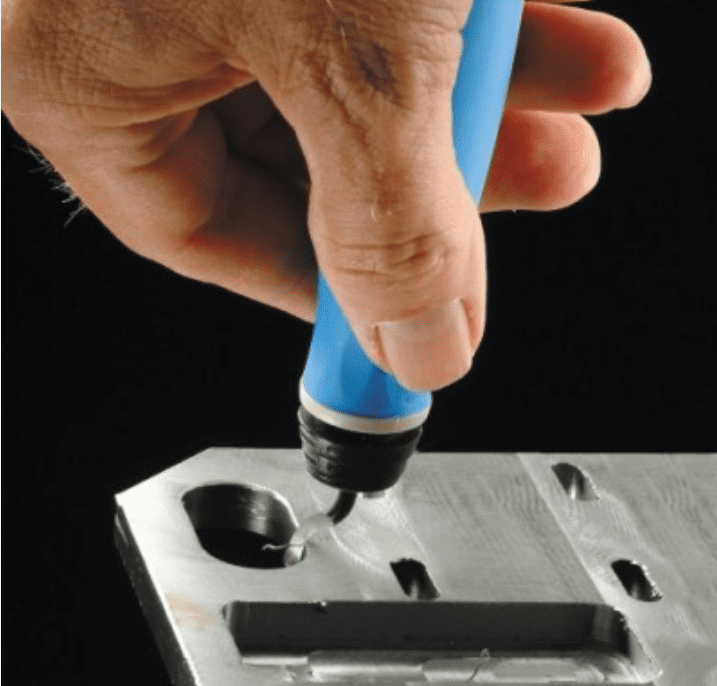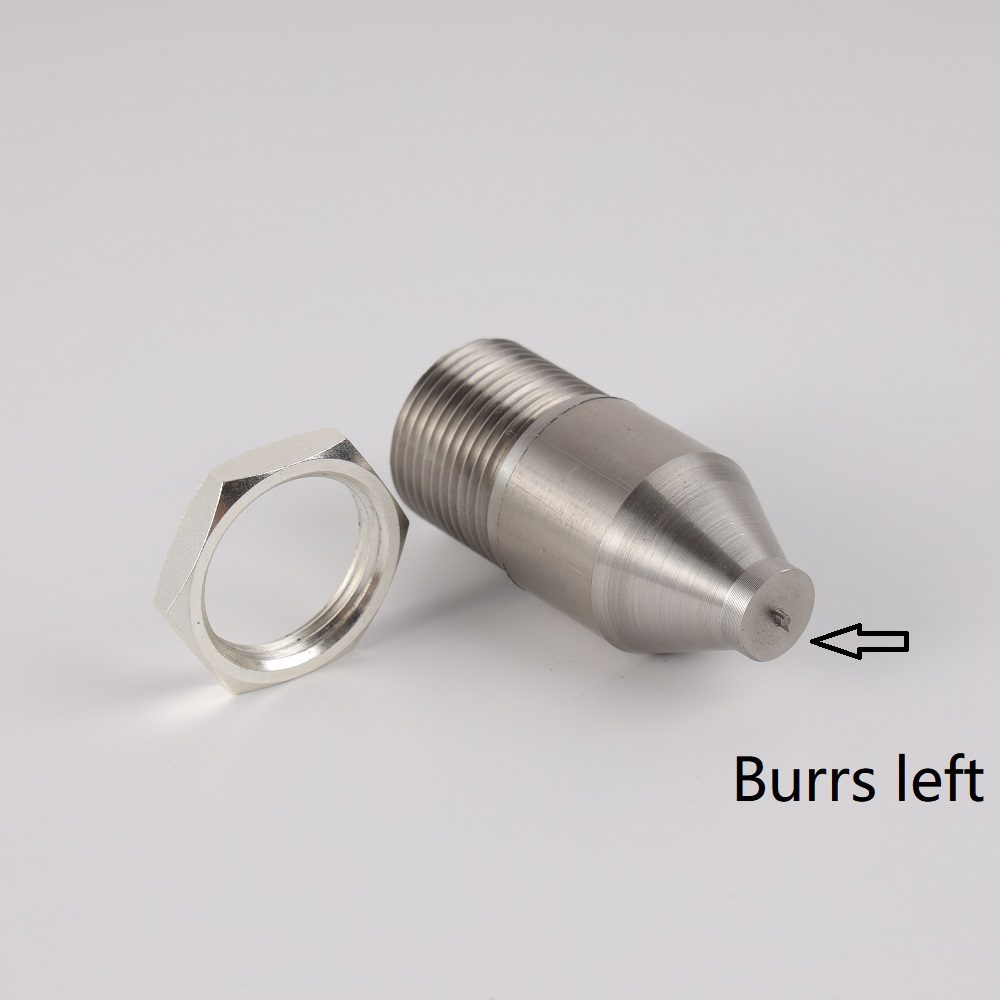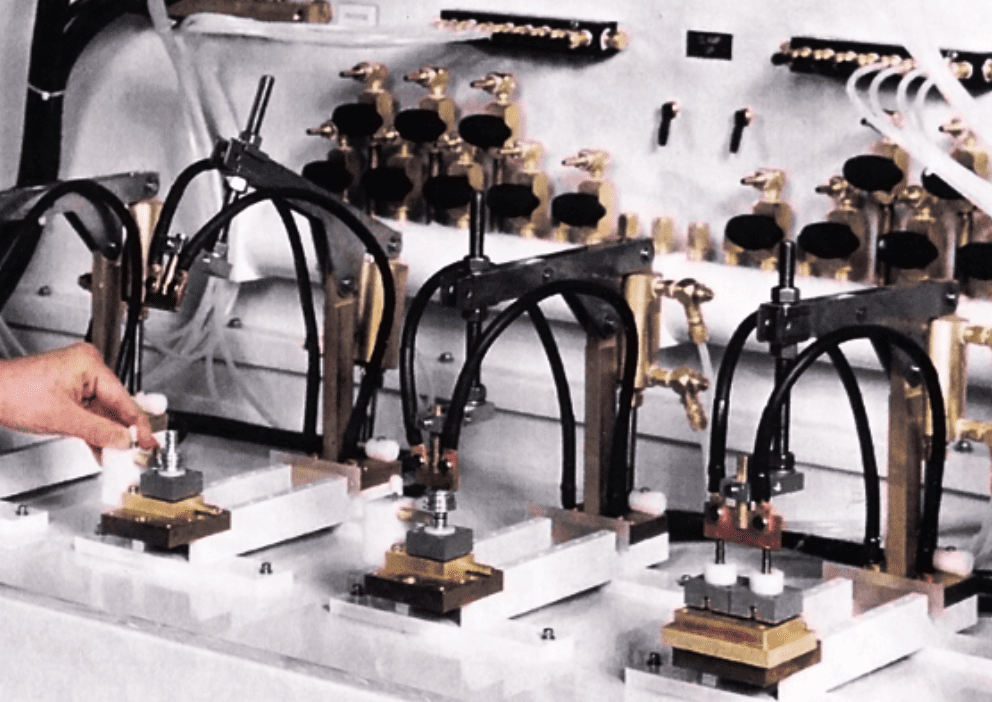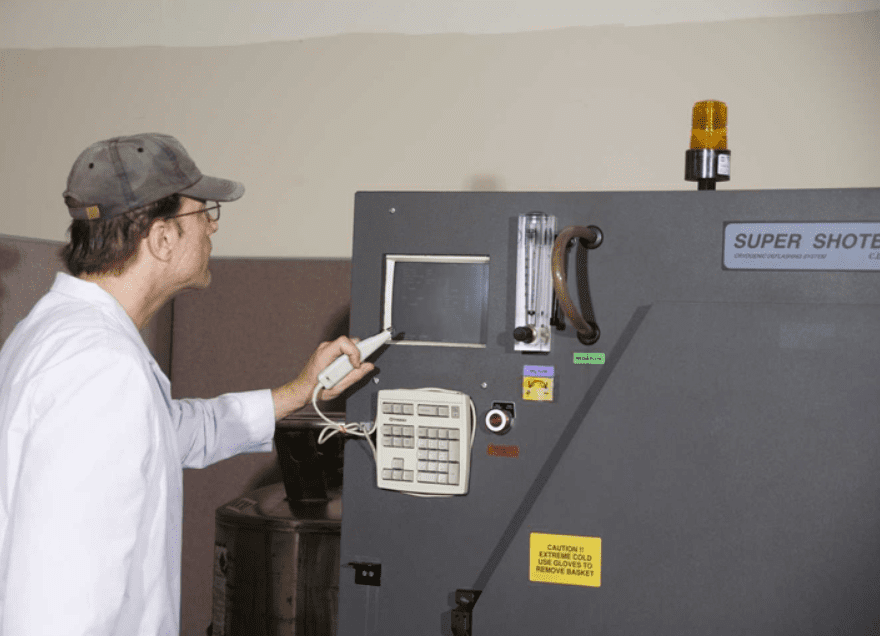What is Deburring? Everything you need to know
In the precision-focused realm of CNC machining, a process often unnoticed yet pivotal to the quality of finished parts is deburring. As a professional deeply immersed in this field, I’ve come to appreciate this crucial step’s subtle yet significant impact. Deburring is not just about refining the physical appearance of a component; it’s about ensuring its optimal functionality and safety.
Deburring is essentially the process of removing tiny, rough edges or burrs that form on metal, plastic, or wood during machining. These burrs, if left unaddressed, can compromise the functionality and safety of the parts. Therefore, deburring ensures that each piece meets the high standards of precision and smoothness required, particularly in critical industries like aerospace, medical, and automotive.
Now, why should you care about deburring as a professional in the field? It’s simple. Understanding this process can significantly enhance the quality of your products, ensuring they meet both industry standards and your client’s expectations. Let’s explore this fundamental aspect of CNC machining together.

What is Deburring?
Deburring is a critical post-machining process, often regarded as an art in the precision manufacturing industry. When metal, plastic, or wood is machined, especially during techniques like CNC milling or turning, it often forms small, rough edges or projections. These are known as burrs.
Deburring, therefore, is the meticulous process of removing these burrs to ensure the final product is smooth and free of any imperfections that could affect its functionality or safety.
There are a few key reasons why deburring is indispensable:
- Safety: Sharp edges can be a hazard in handling, potentially causing injury.
- Functionality: Burrs can interfere with the part fitting properly into an assembly, affecting the overall functionality of the final product.
- Aesthetics: A smooth, burr-free surface is essential for a professional appearance for visible components.
Longevity: Removing burrs can prevent wear and tear that might occur due to irregular surface friction.
Why We Need to Remove Burrs?

- Ensuring Part Accuracy and Fit: In precision engineering, the accuracy of each component is paramount. Even the most minor burr can prevent parts from fitting together correctly. This is especially critical in industries like aerospace and automotive, where the precise assembly of components is non-negotiable for safety and performance.
- Improving Surface Finish: Burrs can mar the surface finish of parts, leading to increased friction and wear over time. A smooth surface is crucial for the part’s performance and its aesthetic appeal, particularly in consumer-facing products.
- Preventing Mechanical Failure: Burrs can lead to mechanical wear and tear, as they create points of high-stress concentration. Over time, this can result in cracks or failures, particularly in parts subject to constant movement or vibration.
- Enhancing Safety: For any components handled by humans, the removal of sharp edges and burrs is crucial to prevent cuts or abrasions. This is particularly important in the medical and consumer electronics sectors.
- Facilitating Coating and Finishing Processes: For parts that require coating or other surface treatments, burrs can lead to uneven application, compromising both the appearance and protection offered by these coatings.
Types of Burrs You Will Find
In the world of machining and manufacturing, not all burrs are the same. Different machining processes and materials lead to the formation of various types of burrs, each with its characteristics and challenges. Understanding these different types is crucial for selecting the most effective deburring technique. Here are some common types of burrs you might encounter:
- Postrun Burrs: These are often found at the end of a machining process, where the cutting tool exits the material. They are usually elongated and thin, somewhat resembling a metal string.
- Entrance or Exit Burrs: These occur when a drill or milling tool enters or exits the workpiece. Entrance burrs are typically smaller and more accessible to remove, while exit burrs can be more oversized and more irregular.
- Thermal Burrs: These are created during processes that involve high temperatures, like laser cutting or plasma cutting. The intense heat can cause the material to melt and reform at the edges, creating hard, sometimes glass-like burrs.
- Rolled Burrs: These occur when the material is deformed rather than cleanly cut, often seen in shearing or stamping operations. The material rolls over to create a burr, which is usually more challenging to remove due to its adherence to the part.
- Micro Burrs: These are tiny, often invisible to the naked eye, and are common in precision machining processes. Despite their size, they can significantly impact the functionality of susceptible components.
- Ridge Burrs: Formed along the edge of a machined surface, these burrs appear as raised ridges and are usually the result of tool wear or a misaligned cutting tool.
Types of Deburring Techniques
Manual Deburring

Manual deburring is often characterized by its simplicity and the high level of control it offers. This technique is beneficial for intricate parts where precision is key or when only a small number of factors need to be deburred. Critical aspects of manual deburring include:
- Tools Used: Common tools for manual deburring include hand files, deburring knives, scrapers, and abrasive stones. Each device offers different levels of precision and is suitable for specific types of burrs and materials.
- Skill Requirement: Manual deburring requires a skilled operator with a steady hand and a keen eye for detail. The quality of the deburring is highly dependent on the operator’s skill and experience.
- Applications: Ideal for complex geometries or delicate parts where machine deburring might be too aggressive. It’s also used for final touch-ups after mechanical deburring.
- Advantages: Offers high precision and control; can be cost-effective for small batches or prototypes.
- Limitations: Time-consuming and labor-intensive; not suitable for large-scale production or very small, intricate burrs.
Mechanical Deburring

Mechanical deburring encompasses a range of automated processes suitable for high-volume production and consistent results. This technique is efficient and can handle a variety of burr types. Key elements include:
- Methods: Common mechanical deburring methods include tumbling, vibratory finishing, and brush deburring. Each technique utilizes different mechanisms to remove burrs, such as abrasion or impact.
- Tumbling and Vibratory Finishing: Parts are placed in a machine with abrasive media. The machine then either tumbles or vibrates, causing the media to rub against the parts, effectively removing burrs.
- Brush Deburring: This involves using brushes made from wire or abrasive materials to wear away burrs mechanically. It’s particularly effective for removing burrs from holes or complex surfaces.
- Advantages: Suitable for large volumes; consistent results; can process multiple parts simultaneously, reducing labor costs and time.
- Limitations: It may not be suitable for parts with complex geometries or where precise control of the deburring process is required. The initial setup and maintenance of machines can be costly.
Electrochemical Deburring (ECD)

Electrochemical Deburring (ECD) is a specialized technique used for removing burrs from metal parts, mainly where conventional deburring methods may fall short. This method is highly effective for hard-to-reach areas and complex geometries. Let’s explore its key aspects:
- Process Overview: ECD works by using controlled electrical current in an electrolytic solution to remove burrs. The part to be deburred acts as the anode and a cathode is positioned close to the burr. When the current is applied, the burr is selectively dissolved without affecting the rest of the part.
- Precision and Control: ECD allows for high precision, targeting specific areas without impacting the surrounding material. This makes it ideal for parts with intricate designs or internal passages.
- Applications: Widely used in the aerospace and automotive industries for components like fuel systems, engine parts, and hydraulics, where precision and reliability are critical.
- Advantages: Highly precise and effective for complex parts. It can remove burrs from areas that are inaccessible by mechanical means.
- Limitations: The setup for ECD is complex and requires specialized equipment and expertise. It’s also limited to conductive materials and may need to be more cost-effective for small batches.
Thermal Deburring
Thermal Deburring (TD) is another advanced deburring technique, particularly effective for removing all burrs from a part simultaneously. This method uses a thermal energy process to eliminate burrs. Here are its salient features:
- Process Overview: TD involves placing the piece inside a sealed chamber and introducing a mixture of combustible gases. When ignited, the resulting explosion generates intense heat that vaporizes the burrs without damaging the part itself.
- Complete Burr Removal: One of the most significant advantages of TD is its ability to remove all burrs from a part in a single operation, regardless of their location.
- Applications: Ideal for parts with multiple burrs, especially in hidden or internal areas, commonly used in automotive, aerospace, and hydraulic components manufacturing.
- Advantages: Extremely effective at removing all burrs simultaneously; fast and efficient for high-volume production.
- Limitations: The process could be more aggressive and may not be suitable for delicate parts. It requires a significant investment in specialized equipment and safety measures due to the nature of the process.
Cryogenic Deburring

Cryogenic Deburring is a unique and innovative method that utilizes extremely low temperatures to remove burrs from machined parts. This technique is particularly effective for certain types of materials and specific applications. Here’s a closer look:
- Process Overview: In Cryogenic Deburring, parts are cooled to very low temperatures using liquid nitrogen or a similar cryogen. This extreme cold makes the burrs brittle, allowing them to be easily removed through a mechanical process, such as tumbling or blasting.
- Material Suitability: This method is particularly effective for materials that become brittle at low temperatures, like certain plastics and rubber. It’s also used for components with intricate designs where traditional deburring might be challenging.
- Applications: Commonly used in the electronics, automotive, and medical industries, especially for parts like plastic gears, molded connectors, and rubber seals.
- Advantages: Effective for removing burrs from delicate parts without applying mechanical stress. It also ensures the integrity of the part’s dimensions and surface finish.
- Limitations: Not suitable for all materials, particularly those that don’t become brittle at low temperatures. The process also requires specialized equipment for cryogenic cooling.
Laser Deburring
Laser Deburring represents a high-precision, modern technique that uses the power of laser technology to remove burrs. This method is beneficial for precise, targeted burr removal. Let’s delve into its key features:
- Process Overview: Laser deburring involves using a focused laser beam to vaporize the burrs. The laser’s intensity, pulse duration, and focus are carefully controlled to target only the burrs, leaving the surrounding material unaffected.
- Precision and Flexibility: The laser can be precisely controlled, making it ideal for parts with complex geometries or hard-to-reach areas. It’s also capable of deburring various types of materials.
- Applications: Widely used in industries that require high precision, such as aerospace, medical devices, and microelectronics.
- Advantages: It provides a high degree of accuracy and control; it can debunk very small or intricate parts; there is no mechanical contact with the part, which preserves its integrity.
- Limitations: The cost of laser deburring equipment can be high, and the process requires specialized knowledge and safety precautions due to the use of high-energy lasers.
Choosing the Right Deburring Method for Your Project
Selecting the appropriate deburring method for a project is a critical decision that can impact the manufacturing process’s quality, efficiency, and cost-effectiveness. Here are key considerations to guide you in making the right choice:
Understand the Material and Part Geometry
- Material Properties: Different materials react differently to deburring processes. For instance, metals may require a different approach than plastics or rubber.
- Complexity and Size of the Part: Complex geometries might benefit from precise methods like Laser or Electrochemical Deburring, while simpler parts may be well-suited to Mechanical or Manual Deburring.
Consider the Type of Burrs
- The nature and location of the burrs are crucial factors. For instance, Thermal Deburring is excellent for parts with internal burrs, while Cryogenic Deburring is more suited for materials that become brittle at low temperatures.
Evaluate Production Volume
- For high-volume production, efficient and automated methods like Mechanical Deburring may be more cost-effective.
- For prototypes or small batches, Manual Deburring might be a practical choice.
Factor in Cost and Resources
- Consider the cost of equipment and training required for certain techniques. Advanced methods like Laser or Electrochemical Deburring might demand a higher initial investment.
- Also, evaluate the availability of skilled labor, especially for designs that require manual expertise.
Assess the Required Level of Precision
- High-precision industries (like aerospace or medical) may necessitate more controlled and precise deburring methods.
- For less critical applications, more straightforward and more cost-effective ways may suffice.
Safety and Environmental Considerations
- Some ways, like Thermal Deburring, require stringent safety measures.
- Consider the environmental impact of the deburring process, especially when dealing with hazardous materials or processes.
Turnaround Time
- Time constraints of the project should also be considered. Some methods are quicker than others and can significantly reduce overall production time.
Conclusion
At Worthy Hardware, we pride ourselves on our CNC machining and deburring expertise, offering tailored solutions to meet your specific needs. Our commitment to quality, precision, and efficiency is unwavering, and we’re equipped to handle the challenges of modern manufacturing with our advanced techniques and skilled team.
Are you facing deburring challenges in your manufacturing process? Do you need expert advice on selecting your project’s deburring method?
Contact Us Today!

